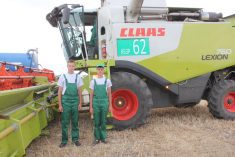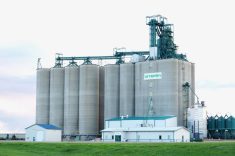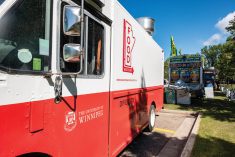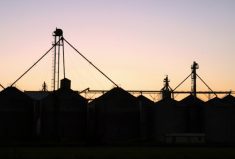While talking with farmers and experts and reading far more than anyone ought to during the year, reporters come across many odd stories.
They’re funny and make good anecdotes at Sunday dinner but, due to either lack of time or lack of relevancy, they don’t make it into print.
As a great fan of the bizarre and absurd, I think that’s a shame. So, with another year behind us, here are a few odd stories I ran across during 2023.
Read Also

Roundup retraction makes public trust ripples
A foundational study on glyphosate safety was recently retracted, while Roundup maker Bayer has already said it may ditch the key agricultural herbicide after lawsuits piled up.
The badger box
Tuberculosis researchers Fred Quinn and Liliana Salvador told me about this one in the middle of a serious and fascinating conversation about bovine tuberculosis and human health.
Here in Manitoba, we think of wild bovine TB risk in terms of cervids like elk and white-tailed deer. In the U.K., the reservoir species is the badger.
Those who watch the farming exploits of Jeremy Clarkson will know this. His struggles to combat the creatures were documented on the Amazon Prime series Clarkson’s Farm. Clarkson told British media company LADBible in February that, “When you get cows, the biggest problem you have are badgers.”
He described the animals as “evil,” “vicious” and used other adjectives that would require a censor.
The trouble is, they’re also a protected species in the U.K. and can’t be killed. So how do the British control them?
There are vaccines against TB, Quinn and Salvador noted, but badgers can’t be put through the chute and given a needle. The U.K. has tried infusing bait with the TB vaccine, but it’s difficult to ensure the right animals get the right amount.
In the U.S., there was a different idea. Some American scientists built a device based on the design of a live trap for foxes. The box, powered by solar panels, was outfitted to trap the badger, weigh it, produce a bit of bait that had been infused with the correct amount of vaccine, mark the badger so it couldn’t be vaccinated again and release it.
As much as I’d like to see a 24-hour livestream of this box at work, it was never used in the U.K. The effort was limited by the pandemic and the American government wouldn’t let researchers test it on American badgers.
It would also take thousands of boxes to vaccinate every British badger.
How to get your steam engine licence
As a Steinbach resident, I made a pilgrimage this fall to the Mennonite Heritage Village for its annual Fall on the Farm event.
As my family and I waited for the garden-tractor-towed barrel train to get rolling, I started talking with a nearby acquaintance. Her husband was there with the local steam club to drive the steam traction engine that powers the threshing demonstration.
I’d already taken note of the machine. It’s hard not to, being as big as some apartments and emitting a tremendous racket. Jokingly, I asked how he got to be the one driving that thing.
For those not familiar, a steam traction engine is what you get when you take a small, steam-powered railway locomotive, put it on a set of metal wheels and use it to pull farm equipment.
As per the Manitoba Historical Society, they appeared on the Prairies in the 1880s. Few farmers could afford to own one, so they relied on travelling custom plowmen and threshing crews.
Today, if you want to drive one, you must get a steam engine drivers’ licence, my friend told me. Yes, there is a road test.
I looked it up, and it’s true. The province (through its labour department, not Manitoba Public Insurance) issues Historical Steam Traction Boiler Operator Licences.
To get one, the operator must pass a written test, have 120 hours of experience on a licensed historic boiler and pass a practical driving test. No word on whether it includes parallel parking.
I later discussed this with Gordon Goldsborough, head researcher with the Manitoba Historical Society and a historian who works with the Manitoba Agricultural Museum. He told me that insuring one’s vintage steam tractor is quite the feat. He’d witnessed the process at the museum. Inspectors are apparently quite picky about things like loose rivets.
In retrospect, it makes complete sense that you’d need a licence. Steam tractors are huge, powerful pieces of equipment, for all that they generally appear at parades and harvest celebrations.
Nevertheless, I admire the dedication of folks who keep these dragon-like pieces of ag history alive, and when I can find the time, I’d like to learn more.
By the way, I’m told the Manitoba Agricultural Museum holds a yearly steam tractor course. Maybe that’s a story for the coming year.
















